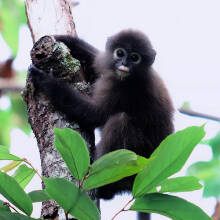
Dusky Leaf-monkey (scientific name: Trachypithecus obscurus) is also known as Dusky Leaf-monkey in English. It has 7 subspecies.The black leaf monkey is a social animal, with 2-12 individuals in each group, usually consisting of one or two mature male monkeys and multiple female monkeys and their of...
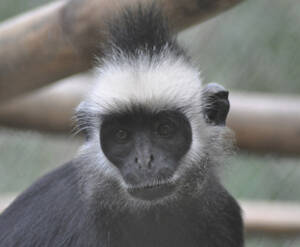
Laotian Langur (scientific name: Trachypithecus laotum), also known as Laotian Langur, is distributed in the Lao People's Democratic Republic.The Laotian leaf monkey inhabits forested areas on steep hillsides, living on steep, often nearly vertical cliffs of karst limestone. Such hills can provi...

Indian black leaf monkey (scientific name: Trachypithecus johnii) foreign name Nilgiri Langur, no subspecies.Little is known about the biology of the Indian black leaf monkey. The young are mainly born between May and November, just after the monsoon brings fresh leaves. The species usually consists...
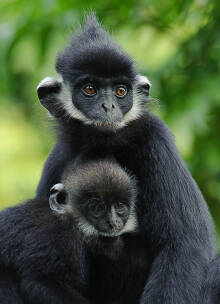
The Vietnamese black leaf monkey (scientific name: Trachypithecus hatinhensis) is also known as Hatinh Langur in English. It is a monotypic species with no subspecies differentiation. Some primatologists believe that the Vietnamese black leaf monkey is a subspecies of the Laotian black leaf monkey....

Indochinese black leaf monkey (scientific name: Trachypithecus germaini) foreign name Indochinese Lutung, no subspecies.Indochinese black leaf monkey likes to live in groups, in small groups, each group usually has 3-10 individuals. Mainly arboreal, usually active and foraging in the upper layers of...
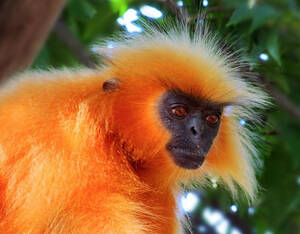
Golden Langur (scientific name: Trachypithecus geei) is also known as Gee’s Golden Langur in English. There are 2 subspecies.Golden Langurs live in groups, with 2-12 in each group, usually consisting of one or two mature male monkeys and multiple female monkeys and their offspring. Active during th...
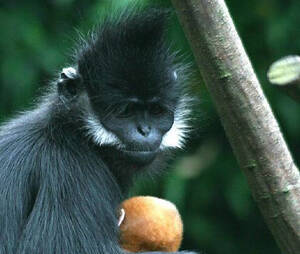
Delacour’s langur (scientific name: Trachypithecus delacouri) is also known as Delacour’s langur, which is named after the leaves it feeds on.Delacourt's leaf monkeys are social animals with a strict population hierarchy. In a family group, there is a male, multiple females and their offspring...
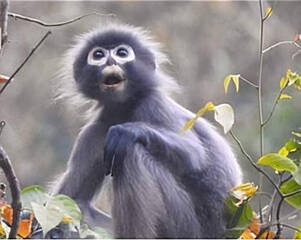
Burmese black leaf monkey (scientific name: Trachypithecus barbei) foreign name Tenasserim Lutung.Burmese black leaf monkey mainly lives in trees. They like to live in groups, in small groups, usually 3-10 in each group, and larger groups have about 20. They usually move and feed in the upper layers...
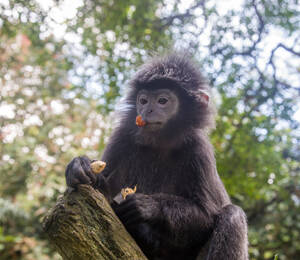
Javan Lutung (scientific name: Trachypithecus auratus) is called Javan Lutung in foreign language. There are two subspecies.Javan Lutung mainly lives in trees. They like to live in groups, usually 3-10 in each group, and the larger group has about 20. They usually move and feed in the upper layers o...

The giant shore crab is also commonly known as the emperor crab, and should not be confused with the king crab.The giant shore crab is a predator of many organisms, especially bivalves, polychaetes, and small crustaceans. They are mainly nocturnal, but they are active during the day depending on the...
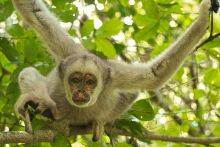
The northern muriqui is extremely rare and is one of the most endangered primates.The northern muriqui mainly feeds on leaves and branches, but also eats fruit, often using its dangling tail to eat while hanging upside down. Female monkeys are more independent than male monkeys, and they leave the g...
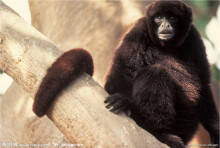
The Amazon spider monkey's scientific name is Ateles marginatus. It is named because of its slender limbs. When it moves on the tree, it looks like a giant spider from a distance. It has dense hair, a small round head, and a tail that is longer than its body length, up to 80 cm, and is very enta...
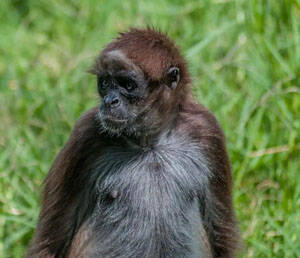
The brown spider monkey, scientifically known as Ateles hybridus, is also known as the spotted spider monkey. It is a critically endangered species of spider monkey and a type of New World monkey.Although the brown spider monkey spends most of its time in trees, it occasionally comes down the mounta...
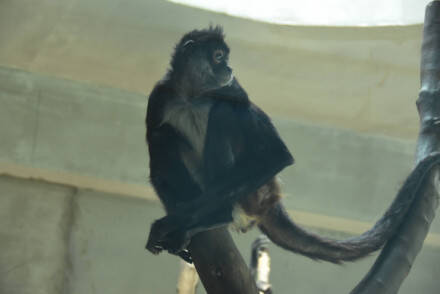
Black-handed spider monkey (scientific name Ateles geoffroyi) is a arboreal primate that lives in groups. It mainly feeds on fruits, but also eats leaves, flowers, seeds, bark, honey, and small insects.Black-handed spider monkeys can reproduce throughout the year, with a gestation period of 7-8 mont...
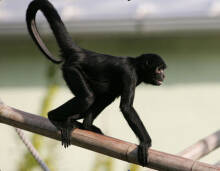
Brown-headed spider monkey (scientific name Ateles fusciceps) is a species of spider monkey, belonging to the New World monkey.Brown spider monkeys live in loose small groups of about 20 members each, but it is rare to see them gathering together. Male brown-headed spider monkeys generally do not le...
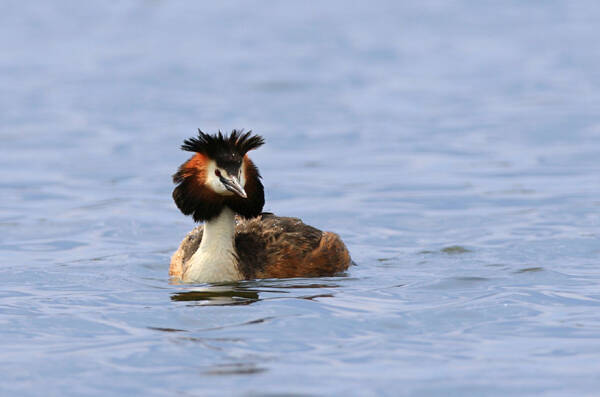
The Crested Grebe is a summer bird that lives from the northeast to the Qinghai-Tibet Plateau and winters in most areas south of the Yangtze River. During the breeding season, it has complex courtship behaviors, with male and female individuals performing a ritualized "dance" on the water...

The small grebe (pì) is a species of the genus Small grebe of the family Gruidae. Because of its short and round body shape, it floats on the water like a gourd, so it is also called water hyacinth. It breeds and hibernates in slow-flowing lakes, ponds, swamps and rivers, often moving alone or in p...
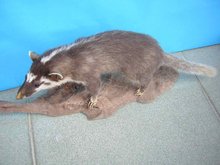
The Javan ferret badger's scientific name is Melogale orientalis, and its foreign name is Javan ferret badger. It is an animal of the genus Ferret badger.The Javan ferret badger inhabits forests, shrubs, and trees. It lives in self-excavated tree holes or rock caves. It only goes out to hunt in...
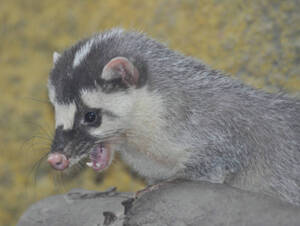
The ferret badger (scientific name: Melogale moschata) is known as Chinese Ferret-badger and has 7 subspecies.Ferret badgers are nocturnal. They come out in pairs after dark and return to their burrows in the early morning. Individual activities and foraging can last until dawn. They usually live in...
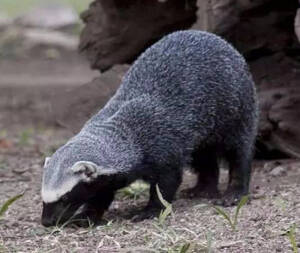
The scientific name of the Great Nest Weasel is Galictis vittata. The Great Nest Weasel is territorial and nocturnal, and is sometimes active in the morning. It can climb trees and swim, but rarely does it and spends most of its time on the ground. They live alone or in pairs and mainly eat small ve...